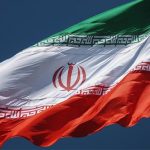Most Powerful Navies of All Time – The Key Points and Summary
- Relative Naval Power: The world’s most powerful navies dominated within the context of their own eras. From the Greek fleet at Salamis to the U.S. Navy today, each force leveraged different strengths, whether tactical brilliance, industrial capacity, or technological innovation.
- Strategic Impact Over Size: At the Battle of Salamis in 480 BC, the vastly outnumbered Greek navy defeated the Persians, showing how well-coordinated strategy can overcome raw numbers.
- Technological Supremacy: The Chinese navy of 1433 AD sailed massive treasure ships over 400 feet long, far ahead of European naval engineering at the time, and completed voyages as far as East Africa.
- Global Dominance Through Deterrence: From 1815 to 1918, the British Royal Navy maintained its edge through the “two power standard,” staying stronger than the next two largest navies combined and enforcing a global peace with minimal actual combat.
- Brief but Decisive Supremacy: In 1941, the Imperial Japanese Navy had the best carrier pilots and aircraft on Earth. Early victories stunned the Allies, but poor logistics and overextension brought rapid decline.
Main Criteria for Determining the Best Navies in History
When ranking the most powerful navies of all time, size alone doesn’t tell the full story. These fleets stood out because of:
- Fleet Size & Ship Numbers: The overall number and quality of warships.
- Technological Superiority & Innovation: Pioneering naval architecture and weaponry.
- Geographic Reach & Global Presence: Ability to operate across oceans and sustain global missions.
- Strategic Impact & Historical Influence: Their influence on wars, empires, and international stability.
- Combat Effectiveness & Battle Records: Notable victories and ability to win under pressure.
- Economic & Logistical Capability: Resources to build, supply, and maintain fleets.
- Duration of Naval Dominance: How long each navy held its top-tier global position.
What Are the Best Navies of All Time?
Throughout history, the most powerful navies weren’t just large, they were strategically decisive. They projected power across oceans, dominated key maritime trade routes, and shaped the course of global conflicts. Whether through technological innovation, tactical superiority, or overwhelming industrial output, these fleets redefined what it meant to control the seas.
Greek Navy, Battle of Salamis, Second Persian Invasion (480 BC)
Fighting for the survival of their homeland, the Greeks assembled a smaller but faster fleet that would change the course of history at Salamis.
- Technological Innovation & Ship Design: Deployed advanced triremes, light, fast warships with three banks of oars, optimized for speed and ramming tactics in narrow straits.
- Strategic Naval Victories & Combat Records: Achieved a decisive win against a numerically superior Persian fleet, preventing the conquest of mainland Greece and preserving Western civilization.
- Geographic Control & Trade Dominance: Maintained dominance in the Aegean and Eastern Mediterranean, protecting vital sea lanes and regional influence.
Chinese Navy, 1433 AD
At the height of the Ming Dynasty, China commanded the largest and most technologically advanced navy the world had ever seen.
- Technological Innovation & Ship Design: Constructed enormous “treasure ships” under Admiral Zheng He, some over 400 feet long, with cutting-edge hull design and navigation capabilities.
- Strategic Naval Victories & Combat Records: Completed seven major diplomatic and trade expeditions without naval defeat, asserting soft power across the Indian Ocean.
- Geographic Control & Trade Dominance: Extended Chinese maritime influence as far as East Africa, fostering trade and tribute relationships across Asia and beyond.
Royal Navy, 1815-1918 AD
Following the Napoleonic Wars, Britain’s Royal Navy stood unchallenged, keeping peace through global dominance for over a century.
- Technological Innovation & Ship Design: Led the transition from sail to steam and from wood to steel, launching revolutionary ships like HMS Dreadnought.
- Strategic Naval Victories & Combat Records: Maintained maritime supremacy with minimal conflict, enforcing the Pax Britannica across vast colonial holdings.
- Geographic Control & Trade Dominance: Controlled key chokepoints and shipping lanes worldwide, with naval stations spanning the globe from Bermuda to Hong Kong.
Imperial Japanese Navy, 1941
In the early days of World War II, Japan’s navy stunned the world with its striking power, coordination, and technological edge.
- Technological Innovation & Ship Design: Deployed cutting-edge aircraft carriers, long-range torpedoes, and the iconic Mitsubishi A6M Zero fighter.
- Strategic Naval Victories & Combat Records: Achieved rapid success with attacks on Pearl Harbor, the Philippines, and Southeast Asia, until strategic overreach eroded its dominance.
- Geographic Control & Trade Dominance: Briefly controlled a vast swath of the Pacific, threatening Allied supply chains from the Indian Ocean to Hawaii.
United States Navy, 1945
Emerging from World War II with unmatched industrial strength, the U.S. Navy became the dominant maritime power and has remained so ever since.
- Technological Innovation & Ship Design: Developed the largest fleet of aircraft carriers, introduced nuclear-powered submarines, and pushed forward digital warfare capabilities.
- Strategic Naval Victories & Combat Records: Played the decisive role in defeating Japan, securing victory in the Pacific, and shaping Cold War deterrence.
- Geographic Control & Trade Dominance: Maintains a truly global naval presence, with forward-deployed forces in every major ocean and unmatched logistics and strike capability.
Most Powerful Navies of All Time: Comparison Table
| Criteria | Greek Navy (480 BC) | Chinese Navy (1433 AD) | Royal Navy (1815–1918) | Imperial Japanese Navy (1941) | United States Navy (1945–Present) |
| Fleet Composition & Vessel Quality | Light triremes optimized for maneuver and ramming | Massive treasure ships, advanced navigation tools | Ironclads, dreadnoughts, steam-powered global fleet | Modern aircraft carriers, cruisers, submarines | Carrier strike groups, nuclear subs, global reach |
| Operational Range & Global Projection | Eastern Mediterranean | Indian Ocean to East Africa | Global, including Atlantic, Pacific, and Indian Oceans | Pacific-wide presence | Worldwide, including Arctic, Indo-Pacific, and Atlantic |
| Naval Infrastructure & Base Networks | City-state harbors and island ports | Major shipyards in Nanjing, coastal forts | Worldwide bases: Gibraltar, Malta, Singapore, Bermuda | Forward bases across Asia-Pacific | Dozens of bases, forward-deployed fleets across all major regions |
| Crew Training & Maritime Expertise | Highly trained rowers and sailors | Elite navigators and sailors under imperial command | Professional officer corps, Royal Naval College system | Skilled carrier and submarine crews | Highly trained in joint operations, advanced simulation systems |
| Alliance Systems & Coalition Building | Allied with other Greek city-states | Tributary relationships with foreign kingdoms | Dominant force within British Empire and protectorates | Axis alliance, regional client states | NATO, AUKUS, and defense partnerships with 60+ nations |
| Resource Mobilization & Shipbuilding Capacity | Limited but agile and innovative | State-directed mega-projects funded by the imperial treasury | World-leading shipyards, industrial revolution-powered | Strong but ultimately unsustainable production capacity | Largest military-industrial complex globally |
| Cultural & Political Maritime Legacy | Symbol of Western resistance and naval ingenuity | Showcase of Chinese global outreach and diplomacy | Created and enforced Pax Britannica | Early dominance followed by rapid decline due to strategic overreach | Defined post-WWII order; central to global security and economic trade today |
Final Thoughts
Each of the five navies featured here dominated its era not just through fleet size or firepower, but by mastering the strategic demands of its time. The Greek Navy’s victory at Salamis preserved Western civilization. The Chinese Navy under Zheng He demonstrated early global reach and diplomatic influence.
The British Royal Navy enforced a century of relative peace through sheer dominance. Japan’s Imperial Navy made a bold but ultimately unsustainable bid for control in WWII. And the U.S. Navy continues to shape the global order through unmatched technological superiority and forward deployment.
While tactics, technology, and alliances evolve, the underlying principles of naval power remain constant: control of trade routes, the ability to project force, and a flexible, well-trained fleet capable of adapting to geopolitical realities. Studying these historic naval powers offers timeless lessons in deterrence, resilience, and global influence.
FAQs
Which navy dominated the seas for the longest time period?
The British Royal Navy held global naval supremacy from roughly 1815 to 1918, enforcing the “two power standard” and maintaining maritime peace across its empire for over a century.
What role did technology play in naval supremacy throughout history?
Technology was a key differentiator. From Greek triremes and Chinese treasure ships to British dreadnoughts and American nuclear-powered carriers, each dominant navy leveraged cutting-edge innovation to stay ahead of rivals.
How many ships did the largest historical navies possess?
Fleet sizes varied, but the Royal Navy at its peak included over 500 major warships. The U.S. Navy exceeded 6,000 total vessels during WWII, the largest fleet in recorded history.
Which navies controlled the most important trade routes globally?
The British Royal Navy controlled major sea lanes during the 19th century, while the modern U.S. Navy ensures free navigation across key chokepoints like the Strait of Hormuz, the South China Sea, and the Suez Canal.
Which country has the most powerful navy today?
The United States Navy is currently the world’s most powerful, with unmatched global presence, the most aircraft carriers, and advanced submarine and missile systems.
This article was updated and adapted from original reporting by Kyle Mizokami.
Image: Reuters

















